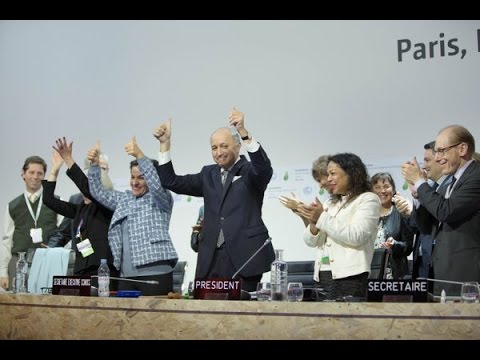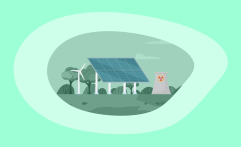Carbon Free Explained: All You Need to Know
Affiliate Disclosure
Hey fellow impactful ninja ?
You may have noticed that Impactful Ninja is all about providing helpful information to make a positive impact on the world and society. And that we love to link back to where we found all the information for each of our posts.
Most of these links are informational-based for you to check out their primary sources with one click.
But some of these links are so-called "affiliate links" to products that we recommend.
Why do we add these product links?
First and foremost, because we believe that they add value to you. For example, when we wrote a post about the environmental impact of long showers, we came across an EPA recommendation to use WaterSense showerheads. So we linked to where you can find them. Or, for many of our posts, we also link to our favorite books on that topic so that you can get a much more holistic overview than one single blog post could provide.
And when there is an affiliate program for these products, we sign up for it. For example, as Amazon Associates, we earn from qualifying purchases.
What do these affiliate links mean for you?
First, and most importantly, we still only recommend products that we believe add value for you.
When you buy something through one of our affiliate links, we may earn a small commission - but at no additional costs to you.
And when you buy something through a link that is not an affiliate link, we won’t receive any commission but we’ll still be happy to have helped you.
What do these affiliate links mean for us?
When we find products that we believe add value to you and the seller has an affiliate program, we sign up for it.
When you buy something through one of our affiliate links, we may earn a small commission (at no extra costs to you).
And at this point in time, all money is reinvested in sharing the most helpful content with you. This includes all operating costs for running this site and the content creation itself.
What does this mean for me personally?
You may have noticed by the way Impactful Ninja is operated that money is not the driving factor behind it. It is a passion project of mine and I love to share helpful information with you to make a positive impact on the world and society. However, it's a project in that I invest a lot of time and also quite some money.
Eventually, my dream is to one day turn this passion project into my full-time job and provide even more helpful information. But that's still a long time to go.
Stay impactful,
You’ve probably heard the terms “net zero” and “carbon neutral” in climate change discussions, but a lesser-known term gaining traction is carbon free, or the generation of electricity that emits little to no carbon. Reducing carbon emissions is key to creating a sustainable planet for future generations. So, we had to ask: What is carbon free really, and how could it help us mitigate climate change?
Carbon free refers to the generation of electricity from sources that emit minimal to no CO2. We can become carbon free by transitioning away from fossil fuels and towards clean energy, but we are not currently on track to achieve the CO2 reduction targets identified in the Paris Agreement.
Keep reading to find out all about what carbon free is, how we can achieve it, why it is important to mitigate climate change, if we are on track to achieve it soon enough, how it relates to the Paris Climate Agreement, and how you can personally help to be carbon free.
The Big Picture of Carbon Free
Carbon free is a relatively new term used when discussing climate change. It involves switching to clean energy sources, which will reduce carbon emissions and can help us avoid the worst effects of climate change.
| What carbon free means | Carbon free refers to the generation of electricity from sources that emit minimal to no carbon dioxide (CO2). |
| How we could become carbon free | We can be carbon free if we transition away from traditional fossil fuels (e.g., coal, oil, natural gas) and towards clean energies (e.g., solar, wind, geothermal, tidal, wave, and nuclear) which emit little to no CO2. |
| Why carbon freedom is important to mitigate climate change | Becoming carbon free is important because the more we reduce our CO2 emissions the more we can slow the negative effects of global warming. |
| What the current status of carbon free is | There is currently no global effort to become carbon free, although individuals or companies may identify this as their goal. Instead, net zero has become the internationally agreed-upon goal for mitigating global warming in the second half of the 21st century. Net zero targets all greenhouse gas emissions rather than just CO2. |
| How being carbon free relates to the Paris Climate Agreement | The Paris Climate Agreement does not explicitly commit countries to become carbon free. It instead marks the beginning of a shift towards a net-zero emissions world and lays out a framework to limit temperature rise to below 2°C, preferably below 1.5°C. |
What Does Carbon Free Mean
Carbon free is most commonly used when referring to electricity generation. It refers to the generation of electricity from sources that emit minimal to no carbon dioxide (CO2).
“Carbon free: 24/7 Carbon-free Energy (CFE) means that every kilowatt-hour of electricity consumption is met with carbon-free electricity sources, every hour of every day, everywhere.”
The United Nations
When you hear the term “carbon free”, think about the words “clean energy”. Clean energy sources produce virtually no greenhouse gasses (GHGs) or any other environmental pollution upon operation, which aids in the fight against global climate change.
“Clean Energy: energy, as electricity or nuclear power, that does not pollute the atmosphere when used, as opposed to coal and oil”
Collins Dictionary
The 6 most common types of clean energy are: solar, wind, geothermal, tidal, wave, and nuclear energy.
How Could We Become Carbon Free
We can be carbon free if we transition away from traditional fossil fuels (e.g., coal, oil, natural gas) and towards clean energies (e.g., solar, wind, geothermal, tidal, wave, and nuclear). So, are we currently doing that?
Could We Achieve Carbon Free Solely With a Reduction in Carbon Emissions
The best data currently available to track clean energy is the data we have on renewable energy because all clean energy is also classified as renewable energy. Renewable energy is also tracked much more closely than clean energy. Although hydropower dominates renewable energy data, it is not a clean energy and is therefore not included in our analysis—yet you’ll find it quite prominently in the graphs below.
In 2022, we generated roughly 6,700 terawatt hours (TWh) of clean energy, 2,000 TWh of which came from wind. Wind accounts for the majority of electricity generation at roughly 25%, followed by solar at 15%, and other renewables (e.g., geothermal, biomass, waste, wave, and tidal energy) at 9%.

Nuclear fission accounted for roughly 10% of global electricity generation in 2022, generating approximately 2,500 TWh of electricity from approximately 413 GW of installed capacity.
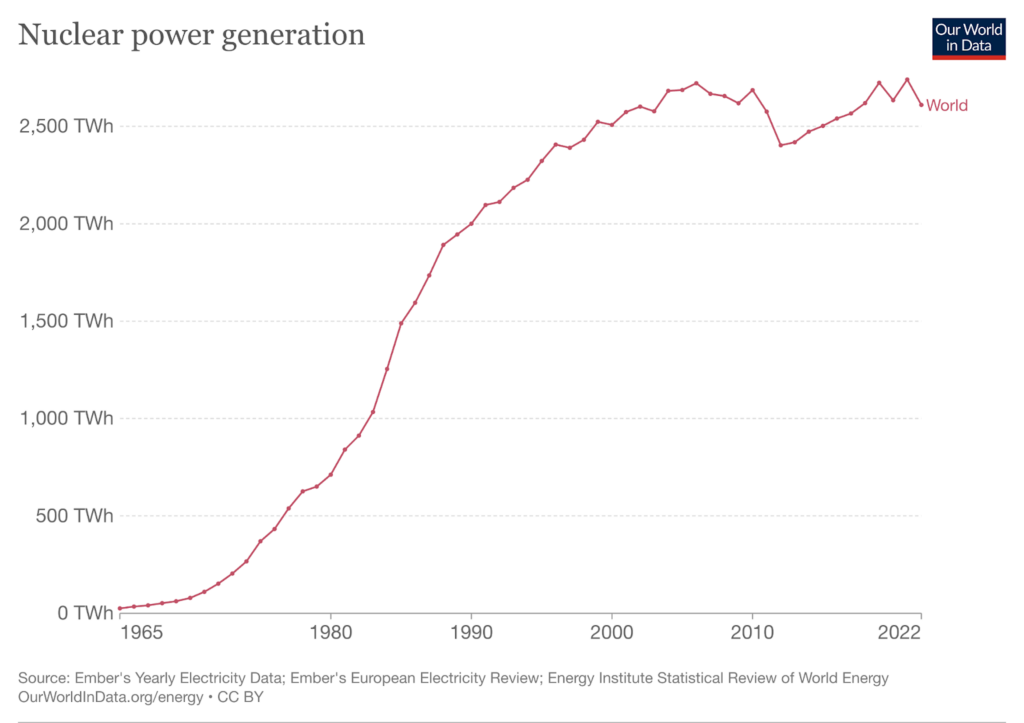
In terms of nuclear fusion, there are currently more than 10 stellarators and 50 tokamaks in operation worldwide, but there are currently no operating fusion reactors that provide energy to our power grid. The focus remains on refining the technology.
What Key Technologies Can Help Us Become Carbon Free
Scaling up clean energy technologies will be essential to helping us become a carbon free society. And experts predict clean energies to continue to increase in capacity in the coming years.
- Solar: Photovoltaic solar installed capacity is to exceed natural gas by 2026 and coal by 2027, becoming the largest in the world.
- Wind: Wind and solar energy projects together are on track to contribute more than one-third of the world’s electricity by 2030. Wind energy alone is poised to become the world’s foremost energy generation source.
- Geothermal: One of the most prominent, emerging geothermal technologies is enhanced geothermal systems (EGS), also known as human-made geothermal energy. The future of geothermal energy also involves a switch from dry steam to binary cycle geothermal plants, which are more efficient.
- Tidal: The global marine energy market is predicted to increase by over 20% to be worth $1.54 billion by 2030. But this will heavily depend on whether we can overcome marine energy’s main obstacles: cost, geography, and sea level rise, which is exacerbated by climate change.
- Wave: If fully realized, wave energy could provide us with 500 GW of power and foster a $53 billion per year market. But this will heavily depend on whether we can overcome marine energy’s main obstacles: cost, technology, and geography.
- Nuclear: Nuclear fission is predicted to continue to play a key role in the clean energy movement for years to come, with experts calling for a capacity increase to 545 GW by 2030 and a tripling of investments to $125 billion per year. In terms of nuclear fusion, most experts agree that we are unlikely to achieve large-scale energy generation before 2050. Research into fusion as a commercially viable energy source still continues.
Why Is Becoming Carbon Free Important to Mitigate Climate Change
Becoming carbon free is important to mitigate climate change because the more we reduce our CO2 emissions the more we can slow the negative effects of global warming.
How is Climate Change Defined
Climate change is arguably the most severe, long-term global impact of CO2. Every year, we emit approximately 37 billion tons of CO2. The carbon found in fossil fuels reacts with oxygen in the air to produce CO2.
“Climate change: changes in the earth’s weather, including changes in temperature, wind patterns, and rainfall, especially the increase in the temperature of the earth’s atmosphere that is caused by the increase of particular gasses, especially carbon dioxide.”
Oxford Dictionary
When carbon enters the atmosphere, it absorbs sunlight and solar radiation, trapping the heat and acting as an insulator for the planet.
Since the Industrial Revolution, Earth’s temperature has risen a little more than 1 degree Celsius (°C), or 2 degrees Fahrenheit (°F). Between 1880-1980 the global temperature rose by 0.07°C every 10 years. This rate has more than doubled since 1981, with a current global annual temperature rise of 0.18°C, or 0.32°F, for every 10 years.
How Does Becoming Carbon Free Specifically Help Mitigate Climate Change
The global average concentration of CO2 in the atmosphere today registers at over 400 parts per million, the highest ever recorded. Becoming carbon free can reduce this total and mitigate the following negative effects of climate change:
- Increasing temperatures: Earth’s atmosphere has warmed 1.5°C since 1880. This may not seem like a lot, but these degrees create regional and seasonal temperature extremes, reduce sea ice, intensify rainfall and drought severity, and change habitat ranges for plants and animals.
- Rising sea levels: Global sea levels have increased approximately 8-9 inches since 1880, displacing people living along coastlines and destroying coastal habitats. Roads, bridges, subways, water supplies, oil and gas wells, power plants, sewage treatment plants, and landfills remain at risk if sea level rise goes unchecked.
- Melting of sea ice: Since 1979, arctic sea ice has declined by 30%. Sea ice plays a major role in regulating the earth’s climate by reflecting sunlight into space and providing habitat for animal species. If all of the glaciers on Earth melted, sea levels would rise by approximately 70 feet, effectively flooding out every coastal city on the planet.
- Changing precipitation patterns: Extreme weather events (e.g., hurricanes, floods, droughts) are becoming more common and more intense. Storm-affected areas will experience increased precipitation and flooding whereas areas located further from storm tracks will experience decreased precipitation and droughts.
- Ocean acidification: The ocean absorbs 30% of the CO2 released into the atmosphere, which decreases the pH (increases the acidity) of the ocean. In the past 200 years, the pH of oceans has decreased by 0.1 pH units, which translates to a 30% increase in acidity. Aquatic life unable to adjust to this rapid acidification will die off. A prime example of this is coral bleaching, where coral expels the algae (zooxanthellae) living in their tissues as a result of changes in temperature, light, or nutrients.
Experts claim that to avoid a future plagued by rising sea levels, acidified oceans, loss of biodiversity, more frequent and severe weather events, and other environmental disasters brought on by the hotter temperatures, we must limit global warming to 1.5°C by 2040.
The more we reduce CO2 emissions, the more we slow the rate of temperature rise, sea-level rise, ice melting, and ocean acidification. When these rates are slowed, the earth’s biodiversity does not have to struggle to adapt to temperature and pH changes. People will not be displaced due to the flooding of coastal areas. And icebergs will continue to provide climate regulation.
Are We on Track to Become Carbon Free Soon Enough
We are not currently on track to become carbon free by 2050, the target date identified in the Paris Climate Agreement. CO2 emissions are predicted to continue to rise despite global, growing momentum and support for the carbon free movement.
What Is the Current Projection of Carbon Emissions
The concentration of atmospheric CO2 is currently 50% higher than pre-industrial levels, measuring over 400 parts per million. And under current conditions, global greenhouse gas (GHG) emissions (including CO2) are projected to increase by 9% by 2030.
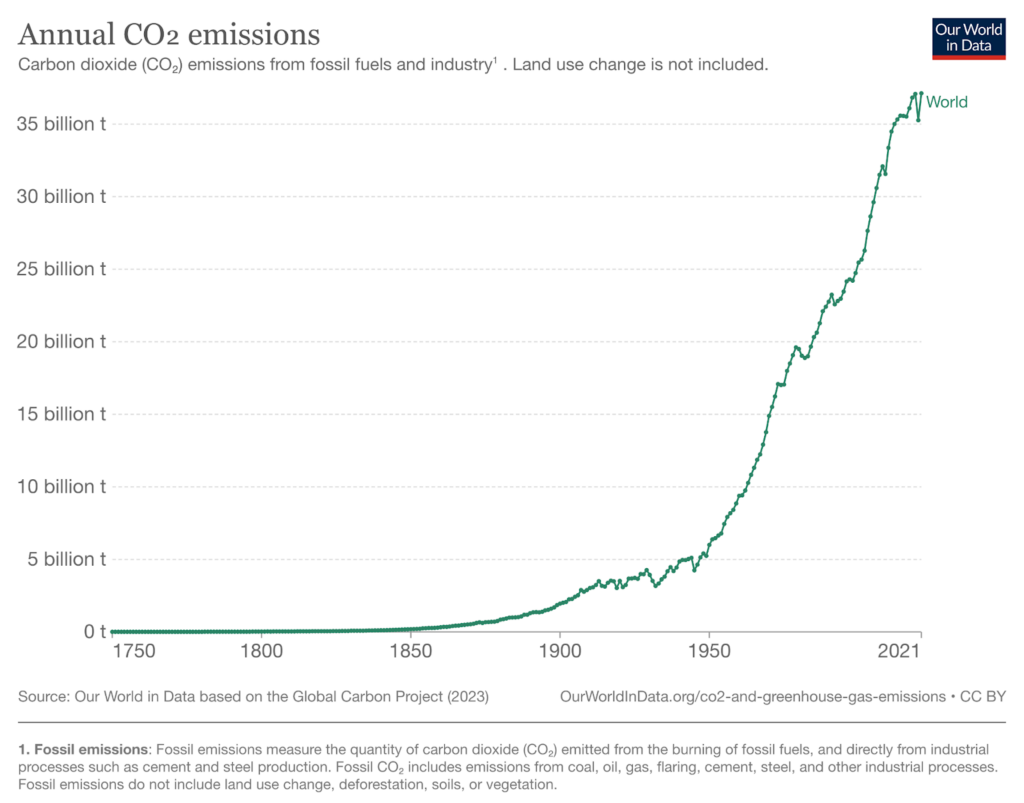
The COVID-19 pandemic triggered the largest decrease in energy-related carbon emissions since World War II, a decrease of 2 billion tons. However, emissions rebounded quickly at the end of 2020, with levels in December ending 60 million tons higher than those in December 2019. This indicates that the earth is still warming at an accelerated rate, and not enough is being done to mitigate climate change.
What Needs to Happen to Become Carbon Free in Time
Becoming carbon free in time will require us to drastically cut carbon emissions across all sectors of the world’s economy, including the energy, transportation, and food industries.
Most importantly, carbon free includes ceasing the use of fossil fuels and switching to clean energy sources. Ramping up and expanding the use of clean energy will be necessary to become carbon free.
Solar, wind, geothermal, tidal, and wave energy are by definition both clean and renewable energy. Renewable energy is infinite by definition because the resources naturally replace themselves over time.
Driven by decreasing costs and improved technology, renewable energy capacity grew over 4 fold from 2000-2022, increasing from 2,800 terawatt hours (TWh) to over 8,500 TWh.

However, only a few countries have renewables as their primary energy source, while the vast majority of countries still have a long way to go. Approximately 14% of global primary energy currently comes from renewable energy technologies, a number which will need to increase substantially if we are to become a carbon free society.
Is There a Global Effort to Become Carbon Free
There is currently no global effort to become carbon free, although individuals or companies may identify this as their goal. For example, Google has pledged to operate on 24/7 carbon free energy by 2030, having already reached 64% carbon free energy globally on an hourly basis in 2022.
Instead, net zero has become the internationally agreed-upon goal for mitigating global warming in the second half of the 21st century.
Net zero emissions refers to achieving a balance between the greenhouse gas (GHG) emissions we produce and the GHGs we take out of the atmosphere.
“Net Zero: a target of completely negating the amount of greenhouse gasses produced by human activity, to be achieved by reducing emissions and implementing methods of absorbing carbon dioxide from the atmosphere.”
Oxford Languages
As the climate crisis continues to worsen, momentum and support for the global net zero effort continue to grow. Over 9,000 companies, 1,000 cities, 1,000 educational institutions, and 600 financial institutions have joined the cause and pledged immediate action to cut global emissions by 50% by 2030.
Which Countries Have Carbon Free Targets
Recognizing the severity of the climate crisis, many countries have gone above carbon free and have pledged to become net zero.
To date, over 140 countries have stated a net zero target, covering roughly 88% of the world’s GHG emissions.
The countries with some of the most ambitious carbon free targets include:
- Finland: Achieve net zero by 2035
- Austria: Achieve net zero by 2040
- Sweden: Cut GHG emissions by 59% by 2030 and achieve net zero by 2045
- United Kingdom: Cut GHG emissions by 68% by 2030 and achieve net zero by 2050
- Iceland: Cut GHG emissions by 55% by 2030 and achieve net zero by 2050
- New Zealand: Achieve net zero by 2050
- France: Achieve net zero by 2050
Climate Watch has also developed a net zero tracker that shows each country’s policy documents, their GHG emission targets, and steps they have taken to achieve net zero.
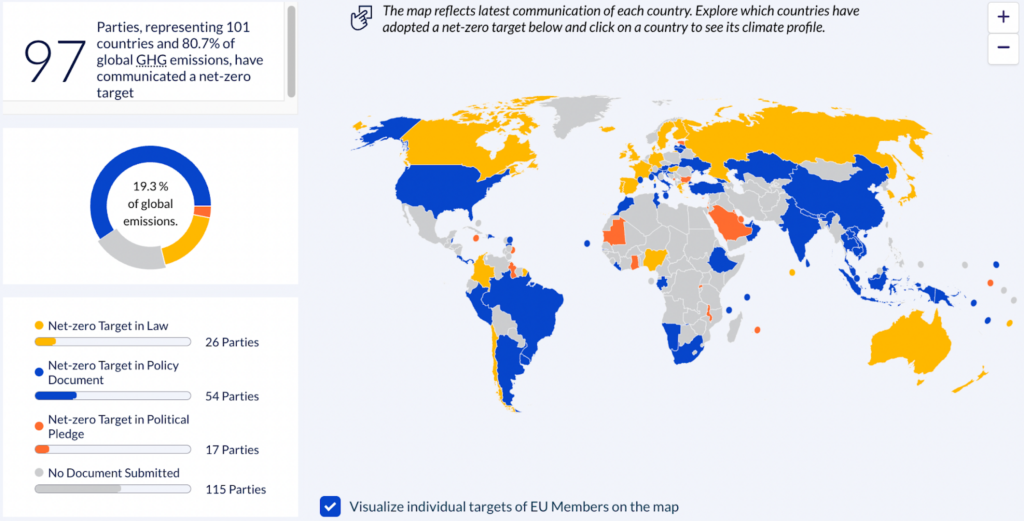
Carbon Free and the Paris Climate Agreement
The Paris Climate Agreement (PCA) is the most well-known piece of legally binding, global, international climate mitigation legislation. It aims to limit global warming to below 2 degrees Celsius (°C), preferably to 1.5°C, compared to pre-industrial levels.
You can check out the highlights of the 2015 COP21 directly from the UN Climate Change channel here:
The PCA dictates we must cut current greenhouse gas (GHG) emissions by 50% by 2030 and reach net zero by 2050 to prevent the worst effects of climate change.
Does the Paris Climate Agreement Commit Countries to Become Carbon Free
The Paris Climate Agreement (PCA) does not explicitly commit countries to become carbon free. Switching to clean energy is one facet of the agreement, which overall marks the beginning of a shift towards a net-zero emissions world and lays out a framework to limit temperature rise to below 2°C.
In the short term, the PCA requires member parties to produce Nationally Determined Contributions (NDCs), or national climate action plans specific to that party. NDCs dictate actions a party will take to reduce GHG emissions in accordance with PCA goals. Every 5 years, there is an evaluation of collective efforts towards achieving the goals of the PCA and to plan further actions.
In the long term, the PCA sets goals to guide all parties to:
- Limit global warming to below 2°C, preferably to 1.5°C
- Keep track of the collective progress of all parties towards achieving the purpose of the PCA
- Provide financing for developing countries to mitigate climate change
In terms of accountability, there are no hard enforcement measures (e.g., financial penalties) associated with the PCA. Although there are mandatory measures for monitoring, verification, and public reporting of climate mitigation progress for each party, the PCA largely relies on international cooperation and peer pressure to prevent any hypothetical “dragging of feet”.
Which Legislations Are Put In Place to Help Become Carbon Free
The most well-known and encompassing piece of legislation put in place in support of the carbon free movement is the Paris Climate Agreement (PCA), which emphasizes we must cut current GHG emissions by 50% by 2030 and reach net zero by 2050 to avoid the worst climate impacts.
Race to Zero is an additional global campaign backed by the United Nations Framework Convention On Climate Change (UNFCCC) with the same end goals as the PCA. But whereas the PCA is composed of nations, Race to Zero comprises non-state actors (e.g., companies, cities, financial/educational/healthcare institutions). To date, over 13,000 members have joined the campaign to race towards net zero and a more sustainable future.
Becoming carbon free will require a shift from fossil fuels to clean energy, which the PCA identifies as a critical part of meeting its goals. There are many global and country-specific policies and organizations aimed at increasing the use of clean energy including:
- 1957 – International Atomic Energy Agency (IAEA): The IAEA was founded as fears about nuclear technology began to develop. It is an organization within the United Nations that seeks to promote the safe, secure, and peaceful use of nuclear technologies through international cooperation.
- 1974 – The International Energy Agency (IEA): The IEA was founded in response to the major oil disruptions in 1974. It promotes international energy cooperation and is made up of 31 member countries.
- 1988 – The International Geothermal Association (IGA): The IGA is a leading, global organization that promotes geothermal energy as a vital part of the transition away from fossil fuels. Today, the IGA has over 5,000 members and 30 affiliate organizations.
- 2001 – World Nuclear Association (WNA): The WNA was established as the leading international organization to represent the global nuclear industry.
- 2005 – Global Wind Energy Council (GWEC): The GWEC was founded as an international trade association for the wind energy industry. Their members represent 99% of the global installed wind power capacity.
- 2009 – The International Renewable Energy Agency (IRENA): IRENA was founded as a global intergovernmental agency focused on scaling renewable energy. It is comprised of 167 member countries as well as the European Union.
- 2013 – Ocean Energy Europe (OEE): They are the largest global network of marine energy professionals, with over 120 member organizations. They aim to advance tidal and wave energy technologies.
- 2015 – International Solar Alliance (ISA): The ISA is a treaty-based organization established to create cooperation among solar energy-resource-rich countries and the rest of the world. There are currently 94 member countries.
- 2015 – The Global Geothermal Alliance (GGA): The GGA was established by IRENA as a platform to enhance discussion, cooperation, and coordination between the geothermal industry, policymakers, and stakeholders. Today, the GGA has 52 member countries
- 2018 – The Fusion Industry Association (FIA): The FIA was formed to be the voice of the private, nuclear fusion industry. They are a nonprofit organization comprised of private companies striving to make nuclear fusion commercially viable.
If you are interested in learning more about country-specific clean energy policies, you can visit the IEA’s policies database and filter by specific energy type.
How You Can Personally Help to Become Carbon Free
Becoming carbon free can instigate meaningful environmental change and begin to reverse some of the effects of climate change because it reduces overall CO2 emissions, one of the main climate change-inducing compounds.
Switching from traditional fossil fuels to clean forms of energy is how you can become carbon free. But it isn’t the only way you can reduce overall CO2 emissions.
One of the easiest and most meaningful ways to contribute to becoming carbon free is to reduce your carbon footprint. These reduction measures don’t have to involve drastic changes either. Actions that may seem small can have a big impact because those small changes add up! You can directly reduce your carbon footprint in three main areas of your life: household, travel, and lifestyle.
Reduce your household footprint:
- Wash with cold water: Washing clothes in cold water could reduce carbon emissions by up to 11 million tons. Approximately 90% of the energy is used to heat the water, so switching to cold saves also saves energy.
- Replace incandescent bulbs with fluorescent bulbs: Fluorescent bulbs use 75% less energy than incandescent ones, saving energy and thus reducing electricity demand and GHG emissions.
Reduce your travel footprint:
- Fly less: Aviation accounts for around 1.9% of global carbon emissions and 2.5% of CO2. Aircraft run on jet gasoline, which is converted to CO2 when burned.
- Walk or bike when possible: The most efficient ways of traveling are walking, bicycling, or taking the train. Using a bike instead of a car can reduce carbon emissions by 75%. These forms of transportation also provide lower levels of air pollution.
Reduce your lifestyle footprint:
- Switch to renewable energy sources: The six most common types of renewable energy are solar, wind, hydro, tidal, geothermal, and biomass energy. They are a substitute for fossil fuels that can reduce the effects of global warming by limiting global carbon emissions and other pollutants.
- Recycle: Recycling uses less energy and deposits less waste in landfills. Less manufacturing and transportation energy costs means less carbon emissions generated. Less waste in landfills means less CH4 is generated.
- Switch from single-use to sustainable products: Reusing products avoids resource extraction, reduces energy use, reduces waste generation, and can prevent littering.
- Eat less meat and dairy: Meat and dairy account for 14.5% of global GHG emissions, with beef and lamb being the most carbon-intensive. Globally, we consume much more meat than is considered sustainable, and switching to a vegan or vegetarian diet could reduce emissions.
- Take shorter showers: Approximately 1.2 trillion gallons of water are used each year in the United States just for showering purposes, and showering takes up about 17% of residential water usage. The amount of water consumed and the energy cost of that consumption are directly related. The less water we use the less energy we use. And the less energy we use, the less of a negative impact we have on the environment.
After reducing your carbon footprint as much as possible, you can then turn to carbon offsets. But with thousands of different offsets and offset companies to choose from, how can we buy carbon offsets that will make a difference?
Purchasing carbon offset projects that are additional, permanent, effective, meet key criteria and project standards, and do not engage in greenwashing can actually make a difference. Climeworks, Terrapass, Gold Standard, and Ecologi are just some of the organizations with the best carbon offset projects.
Final Thoughts
Carbon free refers to the generation of electricity from sources that emit minimal to no carbon dioxide (CO2). We can become carbon free if we transition away from traditional fossil fuels (e.g., coal, oil, natural gas) and towards clean energies (e.g., solar, wind, geothermal, tidal, wave, and nuclear) which emit little to no CO2.
There is currently no global effort to become carbon free, although individuals or companies may identify this as their goal (e.g., Google). Instead, net zero has become the internationally agreed-upon goal for mitigating global warming in the second half of the 21st century.
Despite growing momentum for and support of net zero, we are currently a long way off from achieving it before the 2050 deadline as outlined in the Paris Agreement. CO2 emissions are predicted to increase rather than decrease in the coming years, which further exacerbates global warming.
Switching from traditional fossil fuels to clean forms of energy is how you can become carbon free, but it isn’t the only way you can reduce overall CO2 emissions. Washing in cold water, eating less meat, recycling, and offsetting your remaining emissions can also help.
Stay impactful,

Sources
- 24/7 Carbon-free Energy Compact
- Clean Energy Explained: All You Need to Know | Impactful Ninja
- Impactful Ninja: What is the Carbon Footprint of Solar Energy?
- Impactful Ninja: What is the Carbon Footprint of Wind Energy?
- Impactful Ninja: What is the Carbon Footprint of Geothermal Energy?
- Impactful Ninja: What Is the Carbon Footprint of Tidal Energy and Wave Energy?
- Impactful Ninja: What is the Carbon Footprint of Nuclear Energy?
- Modern renewable energy generation by source – Our World in Data
- Our World in Data: Renewable electricity generation, World
- International Energy Agency: Nuclear – IEA
- World Nuclear Association: World Nuclear Performance Report 2023
- Our World in Data: Nuclear power generation
- International Atomic Energy Agency: Tokamaks, Stellarators, Laser-based and Alternative Concepts: Report Offers Global Perspective on Nuclear Fusion Devices
- International Energy Agency: Solar
- Reuters: Wind and solar to produce over a third of global power by 2030, report says
- Renewable Institute: 9 Reasons Wind Power is Still the Future of Green Energy
- US Department of Energy: Enhanced Geothermal Systems
- Globenewswire: Wave and Tidal Energy Market is projected to reach USD 1.54 billion, at a 25.0% CAGR by 2030
- CorPower Ocean: A short history of wave energy
- International Energy Agency: Nuclear power capacity by country or region in the Net Zero Scenario, 1990-2030 – Charts – Data & Statistics
- Scientific American: What Is the Future of Fusion Energy?
- World Nuclear Association: Carbon Dioxide Emissions From Electricity
- Natural Resources Defense Council: Global Warming 101
- National Oceanic and Atmospheric Administration: Climate Change – Atmospheric Carbon Dioxide
- National Wildlife Federation: Climate Change
- Climate Change: Global Temperature
- Climate Change: Global Sea Level
- US Geological Survey: How would sea level change if all glaciers melted?
- The National Aeronautics and Space Administration: How does climate change affect precipitation?
- National Oceanic and Atmospheric Administration: Ocean acidification
- National Oceanic and Atmospheric Administration: What is coral bleaching?
- United Nations Framework Convention on Climate Change: The Paris Agreement
- Our World in Data: CO₂ and Greenhouse Gas Emissions
- United Nations: Net Zero Coalition
- Our World in Data: Annual CO2 Emissions
- International Energy Agency: After steep drop in early 2020, global carbon dioxide emissions have rebounded strongly
- Renewable Energy Explained: All You Need to Know | Impactful Ninja
- Our World in Data: Renewable Energy
- Our World in Data: Modern renewable energy consumption
- Google Sustainability: Tracking Our Carbon-Free Energy Progress
- Impactful Ninja: Net Zero Emissions Explained: All You Need to Know
- Net Zero Climate: What is Net Zero?
- United Nations: Net Zero Coalition
- ClimateTrade: Countries leading the world’s decarbonization
- Climate Watch: Homepage
- Climate Watch: Net-Zero Targets
- Climate Watch: Net-Zero Tracker
- United Nations: The Paris Agreement
- United Nations: All About the NDCs
- MIT Climate Portal: How are countries held accountable under the Paris Agreement?
- International Energy Agency: Homepage
- International Atomic Energy Agency: Homepage
- International Geothermal Association: Homepage
- World Nuclear Association
- Global Wind Energy Council: Homepage
- The International Renewable Energy Agency: Homepage
- Ocean Energy Europe: Homepage
- International Solar Alliance: Homepage
- The Global Geothermal Alliance: Homepage
- The Fusion Industry Association: Homepage
- International Energy Agency: Policy database – Data & Statistics
- Impactful Ninja: Clean Energy Explained: All You Need to Know
- The Ocean Foundation: Reduce Your Carbon Footprint
- Cold Water Saves: Washing Laundry In Cold Water Protects A Lot More Than Just Our Clothing.
- Energy Information Administration: Renewable Energy Explained
- Energy Star: Compact Fluorescent Light Bulbs (CFLs) and Mercury
- Our World in Data: Where in the world do people have the highest CO2 emissions from flying?
- Our World in Data: Which form of transport has the smallest carbon footprint?
- Zero Waste Europe: Reusable vs Single Use Packaging
- Carbonbrief: Interactive – What is the climate impact of eating meat and dairy?
- Stop Waste: Recycling and Climate Protection
- Impactful Ninja: Is Taking Long Showers Bad for the Environment?
- United States Environmental Protection Agency: Showerheads
- Carbon Offset Guide: Additionality
- Carbon Offset Guide: Permanence
- Natural Resources Defense Council: Carbon Offsets 101
- Terrapass Project Standards: Carbon Offset Projects
- Terrapass: Homepage
- Gold Standard: Homepage
- Ecologi: Homepage
- Impactful Ninja: How to Buy Carbon Offsets That Actually Make a Difference
